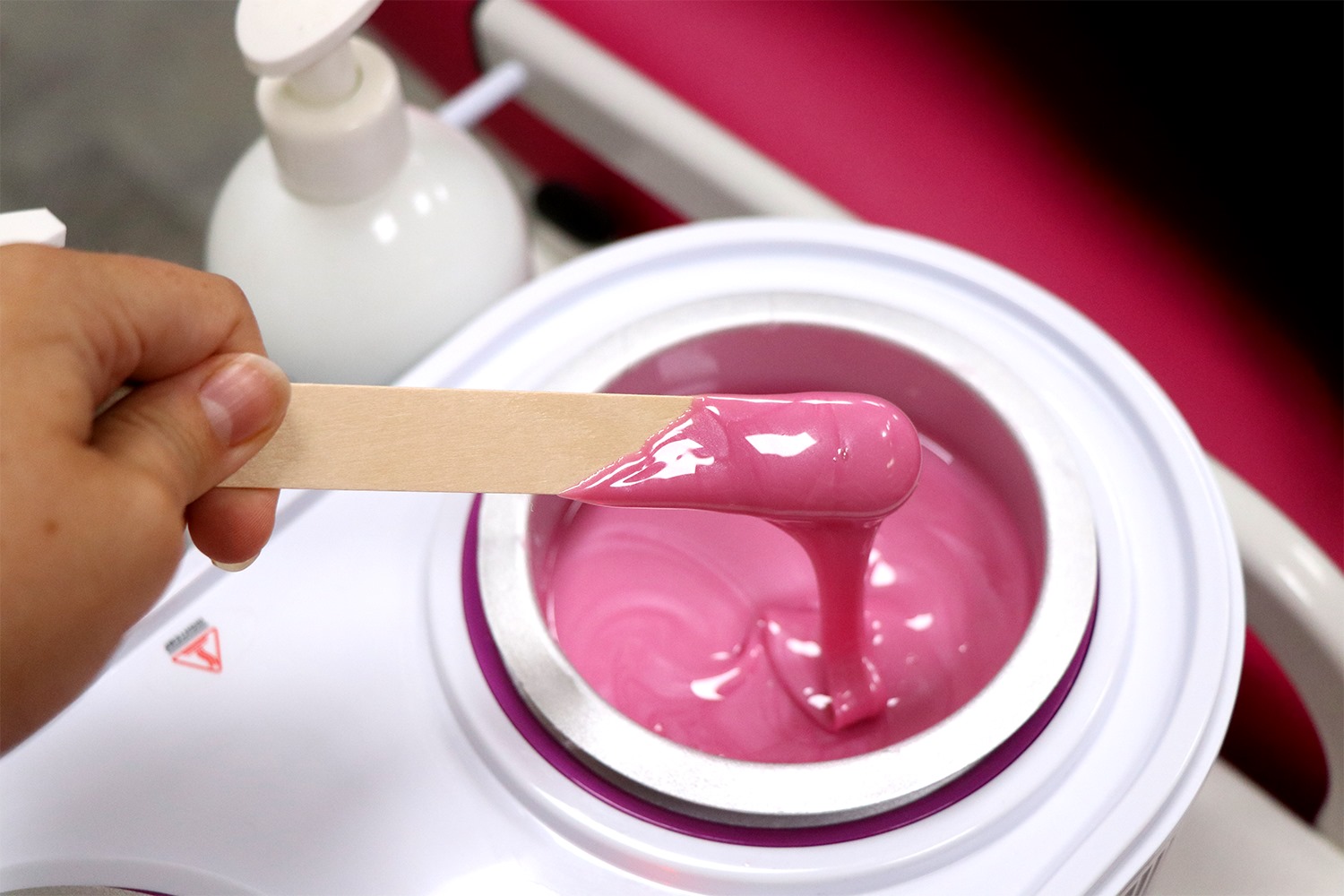Hot wax hair removal is a popular method that many people turn to for smoother skin. It's not only effective but also offers a way to achieve salon-quality results right from the comfort of your home. If you're tired of shaving and are looking for a longer-lasting solution to hair removal, hot wax could be your answer! In this post, we’ll delve into what hot wax hair removal is, how it works, and its numerous benefits when used at home.
Benefits of Using Hot Wax at Home

Choosing to use hot wax at home for hair removal comes with a host of benefits. Here’s a look at some of the major perks:
- Cost-Effective: One of the most compelling reasons to try hot wax at home is the savings. Salons can charge a premium for waxing services. By investing in a home waxing kit, you can save money over time.
- Convenience: You can wax whenever it fits into your schedule! No need to book appointments or rush to the salon.
- Privacy: Some people feel more comfortable and relaxed in their own space. Waxing at home allows you to remove unwanted hair without the presence of others.
- Longer-Lasting Results: Hot wax removes hair from the root, which means you can enjoy smoother skin for weeks—much longer than shaving!
- Less Irritation: Compared to shaving, hot waxing often causes less irritation and is less likely to lead to cuts or ingrown hairs.
Overall, using hot wax at home can be a rewarding experience that not only saves you money but also allows for a personalized and private grooming routine. Just remember to follow proper techniques for a safe and effective outcome!
Essential Tools and Materials Needed

Before you embark on your DIY waxing journey, it's crucial to gather all the necessary tools and materials to ensure a smooth and effective hair removal process. Not only will having these items on hand make your session more organized, but it will also help you achieve the best results possible. Let’s dive into what you’ll need!
- Hot Wax: Choose a high-quality hard wax or soft wax, depending on your preference. Hard wax works great on sensitive areas, while soft wax is ideal for larger areas.
- Wax Warmer: A wax warmer is essential for melting the wax. Make sure it has temperature control for optimal results.
- Wooden Spatulas: Use these to apply the wax. They come in various sizes, so you can choose based on the area you're waxing.
- Wax Strips: If using soft wax, you'll need disposable wax strips. They help in pulling off the wax quickly and effectively.
- Talcum Powder: This is applied prior to waxing to absorb moisture and ensure better adhesion of wax to hair.
- Pre-Wax Cleanser: A skin cleanser removes oil, makeup, and dirt from the area you’ll be waxing.
- Post-Wax Soothing Lotion: This helps calm the skin after waxing, reducing redness and irritation.
- Disposable Gloves: These are a good hygiene practice, ensuring your hands stay clean while waxing.
- Towel: Keep a towel handy for any spills and to help clean the skin after waxing.
With these tools and materials gathered, you're one step closer to achieving a salon-worthy waxing experience right in the comfort of your own home!
Step-by-Step Instructions for Waxing
Now that you've got all your tools and materials ready, it’s time to dive into the actual waxing process. It might sound a bit scary, but with a little preparation, you’ll soon find it's quite manageable. Here’s a simple step-by-step guide to help you through:
- Prepare Your Skin: Start by cleansing the area you intend to wax. Use a pre-wax cleanser to remove any oils or debris. Pat dry carefully.
- Apply Talcum Powder: Dust a light layer of talcum powder over the area. This helps the wax adhere better and prevents your skin from sticking.
- Heat the Wax: Follow the instructions for your wax warmer. Heat the wax until it reaches a honey-like consistency. Always test the temperature on a small area of skin to avoid burns.
- Apply the Wax: Using a wooden spatula, apply a thin layer of wax in the direction of hair growth. Don’t worry about making it perfect; just aim for even coverage.
- Place the Wax Strip: If you’re using soft wax, lay a wax strip over the applied wax, smoothing it down firmly. For hard wax, allow it to cool and harden for a moment.
- Remove the Wax: In a swift motion, pull the strip or the hardened wax away from your skin against the direction of hair growth. Keep your skin taut with the other hand to minimize discomfort.
- Soothing Aftercare: Once you’re done, apply post-wax soothing lotion to calm your skin and reduce any redness. This step is crucial for maintaining skin health!
- Clean Up: Clean any leftover wax from your skin and equipment. Don’t forget to dispose of the used strips and gloves properly.
And there you go! With this guide, you should be well on your way to achieving smooth, hair-free skin with confidence. Just remember, practice makes perfect—so don’t get discouraged if it doesn’t come out flawless the first time!
5. Pre-Wax Preparation Tips
Before diving into the world of hot wax hair removal, it’s crucial to prepare your skin properly. Effective pre-wax preparation can make the entire experience smoother and more comfortable. Here are some essential tips:
- Exfoliate: Exfoliating a day or two before your waxing session helps to remove dead skin cells, preventing ingrown hairs and allowing for a closer wax.
- Moisturize: Keep your skin hydrated leading up to your waxing appointment. Soft, moisturized skin will allow the wax to adhere better, leading to more effective hair removal.
- Hair Length: Make sure your hair is at least 1/4 inch long for the most effective wax. This way, the wax can grasp the hair effectively.
- Avoid Tanning: Steer clear of sun exposure or tanning salons in the days before waxing. Sunburned skin is more sensitive and can make the waxing process painful.
- Conduct a Patch Test: If you’re using a wax brand for the first time, consider doing a small patch test to check for allergies or sensitivities. Apply a small amount of wax on the inner arm and see how your skin reacts.
By following these preparation tips, you are setting yourself up for a more successful and less painful waxing experience. A little preparation goes a long way in ensuring smooth results!
6. Post-Wax Care for Smooth Skin
Congratulations on your successful waxing! Now, let’s talk about how to take care of your skin post-wax to ensure it remains smooth and free from irritation. Here are some strategies to consider:
- Keep it Clean: Gently cleanse the waxed area to remove any residue. Use a mild cleanser to avoid irritating your skin.
- Moisturize: After cleaning, apply a soothing moisturizer. Look for lotions with calming ingredients like aloe vera or chamomile, which can help soothe and hydrate your skin.
- Avoid Certain Activities: For at least 24 hours, refrain from hot baths, saunas, and excessive sweating through exercise. These activities can irritate your freshly waxed skin.
- Skip the Sun: Protect your skin from direct sunlight for a couple of days. If you must go out, apply a broad-spectrum sunscreen on the waxed area.
- Watch for Irritation: Sometimes, your skin might react post-waxing. If you notice excessive redness or bumps, using a cold compress can provide relief.
Post-wax care is as essential as pre-wax preparation! By following these guidelines, you can keep your skin smooth, healthy, and irritation-free for longer.
7. Common Mistakes to Avoid
When it comes to using hot wax at home for hair removal, avoiding common pitfalls can make a world of difference. Here are some mistakes people often make:
- Not Perfectly Cleaning the Skin: It’s crucial to start with clean skin. Dirt and oils can interfere with the wax’s ability to adhere to hair, leading to a less effective hair removal session.
- Using Wax That’s Too Hot: One of the most frequent mistakes is overheating the wax. Always check the temperature with a small drop on your wrist; it should feel warm, not burning!
- Applying Wax in the Wrong Direction: Remember to apply the wax in the direction of hair growth and pull it off against the hair growth. This ensures a smoother, more effective removal.
- Not Pulling Firmly: Pulling the strip off quickly is key. If you hesitate or pull gently, it can cause unnecessary pain and may not remove all the hair.
- Skipping Aftercare: After waxing, it’s important to soothe the skin. Skipping a soothing lotion or aloe vera can leave your skin irritated.
By being aware of these common mistakes, you can improve your technique and enjoy a smoother waxing experience. Each session is a chance to learn and refine your method, so don’t get discouraged if things don’t go perfectly the first time!
8. Conclusion and Final Tips
In summary, waxing at home can be a safe and effective alternative to professional treatments when done correctly. Here are some final tips to help you achieve the best results:
- Start Small: If you’re new to waxing, focus on smaller areas like your underarms or legs before tackling larger areas. This way, you get comfortable with the process.
- Choose the Right Wax: Different types of wax suit different hair types and areas. Hard wax is often recommended for sensitive areas, while soft wax is great for larger body parts.
- Follow Instructions: Always refer to the manufacturer's instructions for the specific wax you’re using. Each product may have unique requirements.
- Pace Yourself: Don’t rush through your waxing session. Take your time to apply the wax properly, and ensure you’re being gentle with your skin.
- Moisturize Regularly: After waxing, keep your skin hydrated to prevent irritation and keep it smooth.
By keeping these tips in mind and avoiding common mistakes, you can confidently embrace hot wax hair removal at home. Happy waxing!
 admin
admin








